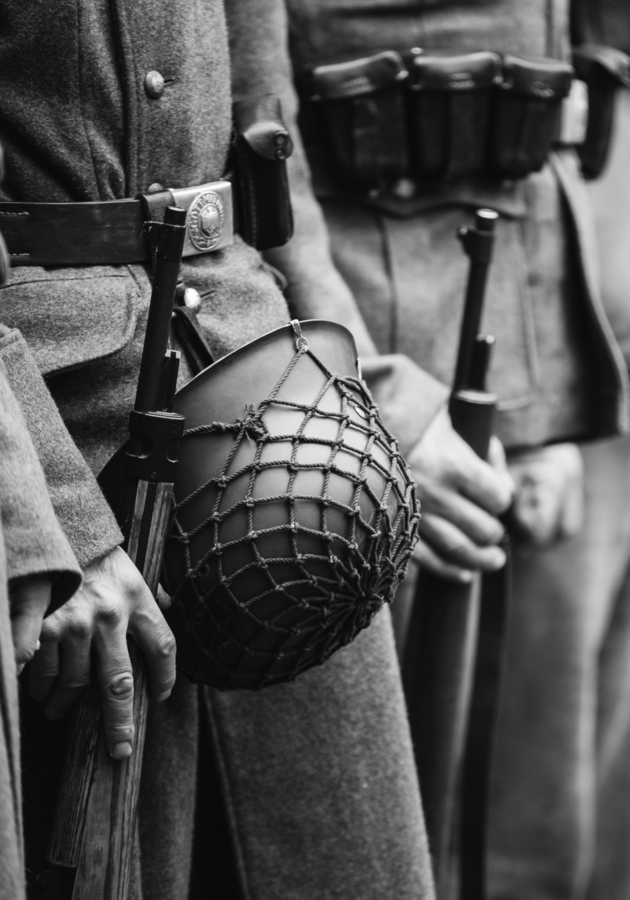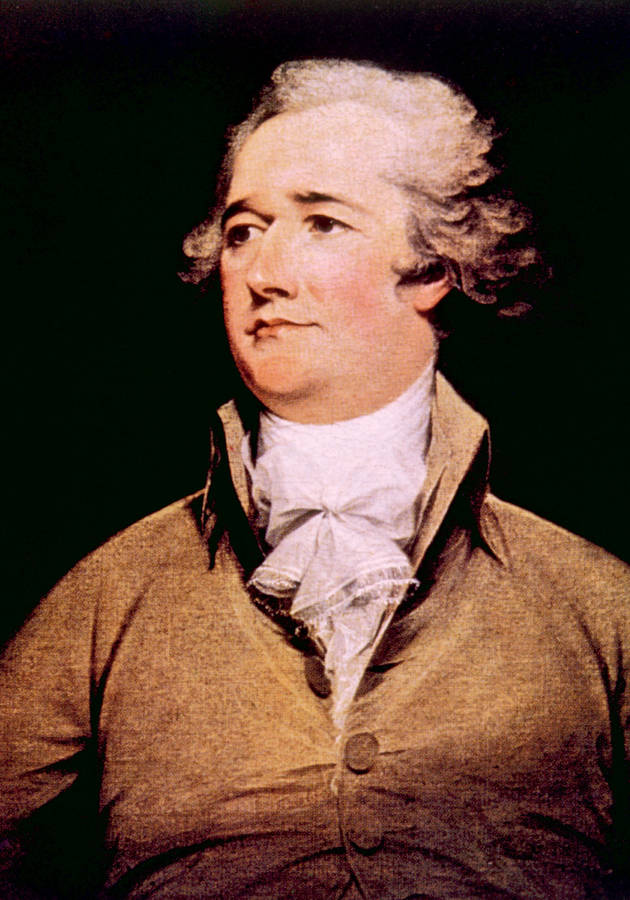To date, World War II is, by far, the cruelest and most destructive conflict in the history of humankind. In “The Second World War,” acclaimed British military historian Antony Beevor attempts to synthesize decades of earlier research into a grippingly thorough 800-page narrative which, in the words of a reviewer, “extends from the North Atlantic to the South Pacific, and from the snowbound steppes of the Soviet Union to the North African Desert.” Get ready for a brief, but epic, summary.
Yang Kyoungjong
In June 1944, a young soldier surrendered to American paratroopers during the Allied invasion of Normandy. Judging by his appearance, his captors thought he was Japanese. It turned out he was, in fact, a Korean going by the name of Yang Kyoungjong. He had been forcibly conscripted by the Japanese into their Kwantung Army in Manchuria in 1938, when he was just 18 years old. The Second World War had barely erupted when he was captured by the Red Army and sent to a labor camp.
In 1942, in a moment of crisis, the Soviet military authorities decided to draft him into their forces, along with thousands of other prisoners of war. Just a year later, at the Battle of Kharkov, Kyoungjong was captured by the German Army. In 1944, he was given a Wehrmacht uniform and sent to France to serve with an Ostbataillon. It was there that he was captured by the confused Americans, along with three other Asians. Kyoungjong was then sent to a prison camp in Britain and later transferred to a camp in the United States. He was released in 1947, became a US citizen and moved to Illinois, where he died in 1992, at the age of 72.
To date, Yang Kyoungjong is considered the only soldier in documented history to have fought on three different sides of a war. “In a war which killed over sixty million people and had stretched around the globe,” comments Beevor, “this reluctant veteran of the Japanese, Soviet and German armies had been comparatively fortunate. Yet Yang remains perhaps the most striking illustration of the helplessness of most ordinary mortals in the face of what appeared to be overwhelming historical forces.”
“Politics by other means”
As Prussian military theorist Carl von Clausewitz explained in his never-finished three-volume magnum opus “On War,” war is an act of violence, the purpose of which is the enforcement of one’s will upon an enemy. What he meant by that was that war can be a goal in itself only in the mind of a lunatic. Otherwise, it’s just one of the many instruments employed by countries embarking on a mission to subjugate their opponents. War, in other words, is what happens when propaganda, economic sanctions and political isolation fail to yield the expected results. Hence, as Clausewitz memorably remarked, “War is a mere continuation of politics by other means.”
The takeaway is that wars never happen suddenly. Most of them are preceded by some visible form of deterrent actions, by threats to use force, by militarized disputes or crises. World War II was no exception. Europe, as Beevor writes, did not stumble into a continent-wide military conflict on September 1, 1939, just as it hadn’t stumbled into the First World War twenty-five years before. Both conflicts were years – and even decades – in the making, preceded by everything from intercontinental crises and global recession to militant irredentism and revanchist nationalism. And even, well, by other wars.
In fact, the tension of the interwar period was so high that some historians speak of a “thirty years’ war,” claiming that World War I – which began in 1914 – didn’t really end in 1919, but lasted all the way until 1945, when the atomic bombs on Hiroshima and Nagasaki put an end to the Second World War. Others include the Bolshevik coup d’état, the Spanish Civil War and the Cold War in their generous calculations and maintain that the 20th century actually saw one long and devastating confrontation between Left and Right, which only ended with the collapse of the Soviet Union and the fall of Communism in 1990.
As Beevor remarks, arguments on the subject can go round and round, but the fact, either way, remains: by 1939, it should have been obvious to many that, rather than putting an end to all wars, the First World War had merely set the scene for an even crueler and more destructive conflict.
An Asian background
By September 1, 1939, the day Hitler and the German army invaded Poland, Yang Kyoungjong, the would-be veteran of three armies, was already a prisoner of war. Even though western historians tend to overlook the Sino-Japanese War and the Soviet-Japanese border conflicts, Beevor argues that they merged so seamlessly into the Second World War that it isn’t an exaggeration to trace the beginning of the global conflict back to 1931, when Japan occupied the Chinese province of Manchuria.
On September 18 of that year, a Japanese soldier detonated a small quantity of dynamite close to a railway line owned by Japan's South Manchuria Railway, located in north-eastern China. Almost immediately after the incident, known as the Mukden incident after the city in which it happened, the Imperial Japanese Army accused Chinese rebels of the act and responded with a full invasion of Manchuria. Six months later, Japan established its puppet state of Manchukuo in the province and propped up the last Chinese Emperor, Puyi, as its ruler.
The rest of China, at the time, was ruled by Chiang Kai-shek of the Chinese Nationalist Party, a “dictatorial, incompetent, corrupt” Generalissimo who was more interested in preventing his communist rival, Mao Zedong, from coming to power after the war than fighting the Japanese invaders. Japan made use of the situation and on July 7, 1937, began a campaign to invade all of China by attacking Beijing. Content with the gains, at the beginning of August 1937, the Imperial Army turned its eyes to Shanghai, the primary commercial and financial hub of the country.
The Battle of Shanghai – which lasted from August to November 1937 – claimed hundreds of thousands of lives and was one of the bloodiest of the Sino-Japanese War. Many Asian historians consider it the starting point of the Second World War as well. Even though it concluded with a decisive Japanese victory, it didn’t bring about the collapse of Chinese resistance. On the contrary, it intensified it, especially among Zedong’s troops whose conduct during the war strengthened the popular support for the Chinese Communist Party at the expense of Kai-shek’s Nationalists. In many ways, it can even be argued that the Sino-Japanese War paved the way for the Chinese revolution of 1949.
The outbreak of war
Two years after the Battle of Shanghai, Japanese self-confidence suffered a serious blow when the Imperial forces were defeated by the Soviet Red Army at Khalkhin Gol, on the Mongolian border with Manchukuo. Obsessed by the threat of Communism and captivated by the wealth of Soviet resources, the Japanese Army had planned to invade Siberia even before it established a puppet state at its borders. The Sino-Japanese War made the conflict between Japan and the Soviet Union even more inevitable, since Joseph Stalin decided to openly support China during the war, both economically and militarily.
Hence, the Battle of Khalkhin Gol – which transpired between May and September of 1939 – was merely the culmination of decades-old politics and a long-standing Soviet-Japanese border scuffle. Even though little known in the West, this battle played a crucial part in the subsequent course of the Second World War. Most importantly, it inflicted a decisive reverse on the Imperial Japanese Army. Before the defeat at Khalkhin Gol, the Japanese believed they could easily occupy Siberia and use the region’s abundant resources to subdue China for good. After the defeat, however, the Japanese turned their eyes southward to South-East Asia and the Pacific Islands, while adopting a policy of appeasement toward the Soviet Union.
To free itself for preparations for the Pacific War, on April 13, 1941, the Empire of Japan signed a nonaggression pact with the Soviet Union. When Nazi Germany launched its invasion on USSR in June 1941, Japan refused to open a second front in the Far East, opting instead to not intervene in the German-Soviet War lest the Germans make significant advancements themselves. In August 1941, Japan and the Soviet Union reaffirmed their neutrality pact, and signed further agreements to respect the borders of Mongolia and Manchukuo. Despite being on opposite sides of the War, Japan and the USSR would not engage in a military combat until the very last days of the war, when the Soviet Red Army would annul the neutrality pact and invade Manchuria, Sakhalin and North Korea.
The situation in Europe
Whereas Japan kept its promise to the Soviet Union, Nazi Germany didn’t. Despite having signed a nonaggression pact with Stalin in the days before the two divided Poland, Adolf Hitler decided to invade Russia in June 1941, thereby recklessly opening an extensive second front which would eventually lead to his own demise. Despite reports of a German build up and over 80 clear indications of an inevitable German assault, Stalin refused to believe that Hitler would ever betray him until the day the invasion began. The most astonishing among these warnings came from the German ambassador in Moscow himself. Stalin welcomed it with anger, accusations, and sheer incredulity. “Disinformation has now reached ambassadorial level,” he is said to have exclaimed on the occasion.
In retrospect, it is difficult to see how anyone could have believed Hitler’s words at the time, least of all Stalin. After all, by enabling Nazi Germany and the Soviet Union to partition Poland between them, the Molotov-Ribbentrop pact was a breach of another international contract, signed merely a year before that one. Namely, in September 1938 in Munich, the United Kingdom and France signed an agreement with Hitler, allowing him to annex a part of Czechoslovakia, populated with mainly ethnic Germans, in exchange for a promise of no further territorial demands. Indeed, after the signing of the Munich Agreement, Hitler publicly announced that Sudetenland would be his last territorial claim in Europe.
In private, however, he complained to his generals that he had been thwarted from having a war because “the British and the French accepted all [his] demands at Munich.” A few months later, in the spring of 1939, he expressed his impatience in a more direct form, in a discussion with the Romanian foreign minister. “I am now 50,” he said. “I would rather have the war now than when I am 55 or 60.” These were just two of the many occasions at which Hitler explicitly revealed his intention to achieve European domination during a single lifetime, which, obviously, he expected to be short. “With his manic vanity,” remarks Beevor, “Hitler could not trust anyone else to carry on his mission. He regarded himself as literally irreplaceable and told his generals that the fate of the Reich depended on him alone.”
The invasion of Poland
On September 1, 1939, after staging several false flag border incidents, Germany invaded Western Poland. British Prime Minister Neville Chamberlain – who had described the Munich Agreement as bringing “peace in our time” just a year before – was taken aback. He responded with an ultimatum demanding the immediate termination of all military operations. Hitler – predictably at this point – decided to ignore the ultimatum.
In response, France and Britain declared war on Germany on September 3, 1939. However, their aid for Poland was very limited, so German troops were able to reach Warsaw in a week. A week later – under the pretext that Poland had ostensibly ceased to exist – the Soviet Union invaded Eastern Poland. By October 6, German and Soviet forces gained full control of the country, marking the end of the Second Polish Republic.
According to German sources, more than 16,000 civilians were executed during the five-week campaign. The true figure is probably much higher, as some 10,000 Poles and Jews were massacred near Mniszek alone, and another 8,000 in a wood near Karlshof. “Houses and occasionally entire villages would also be torched as collective reprisals,” writes Beevor. “Altogether over 500 villages and towns were burned to the ground. In some places, the line of German advance was marked at night by the red glow on the horizon from blazing villages and farms.”
On October 6, during a special session of the Reichstag, Hitler proposed an international security conference and even hinted at a desire for an armistice with the United Kingdom and France, while making it clear that the future of Poland laid in the hands of Germany and the Soviet Union. The proposal was rejected, so Hitler ordered an immediate offensive against France. Due to bad weather, the offensive was postponed until the spring of 1940.
Germany advances
In April 1940, a month before attacking France, Nazi Germany invaded Denmark and Norway. Denmark capitulated in a few hours, and Norway resisted for no more than two months, despite heavy Allied support. On May 10, Hitler finally launched the offensive against the French Republic. To evade the fortifications along the strong Maginot Line on the Franco-German border, the Germans directed their attacks at the neutral neighboring countries. They occupied Luxembourg, virtually unopposed, in just a few hours, whereas the Netherlands and Belgium fell in a few days. The Battle for France lasted 46 days, ending on June 25, with a total collapse of the French army.
Two weeks before the French government capitulated, Italian Prime Minister Benito Mussolini declared war on France and Britain. Despite being conscious of his country’s military and material weaknesses, he was also cunningly aware of the immense power of the German juggernaut and didn’t want to miss his chance to profit territorially before the inevitable peace came. Indeed, after France was defeated, it was divided into German and Italian occupation zones, with one part remaining under French control until November 1942. Known as the Free Zone, this part was administered by the supposedly neutral government of Marshal Philippe Petain from the spa town of Vichy. In reality, however, Pétain's government was obliged to work closely with the German military administration.
As “rivers of frightened humanity” poured toward the Free Zone in France, the Germans began a strategic bombing offensive against Britain. Hitler’s primary objective was to force newly elected British Prime Minister Winston Churchill to agree to a negotiated peace settlement so he could focus on invading the Soviet Union. Even so, the British bravely endured the large-scale night attacks of the German airplanes. Particularly during the first few months of the campaign, the Luftwaffe wrecked numerous cities and factories across the island, but not the British spirit. The Battle of Britain, the first major military campaign fought almost entirely by air forces, lasted all the way until June 1941, when Hitler withdrew the bombers to support Operation Barbarossa, the campaign against the USSR.
The invasion of Russia
Until Hitler decided to head eastward, the Soviet Union exported everything from grain and nutrients to oil and manganese to Nazi Germany. Moreover, Stalin’s government acted as a conduit for other materials, especially rubber, which Germany could not purchase abroad. Even so, Hitler was so obsessed with demolishing what he deemed “Jewish Bolshevism” that he gave up on the idea of invading Britain to rush an invasion of the Soviet Union. Authorized by Hitler on December 18, 1940, Operation Barbarossa, the largest military operation in human history, started on Sunday, June 22, 1941.
The Red Army was even less prepared than Stalin for Hitler’s betrayal. Not that surprising in retrospect, since the Army had lost most of its senior officers during Stalin’s great purges of 1937. As a result, Germany and its allies quickly advanced through Soviet territory, inflicting heavy losses on their enemy in both materiel and personnel. By the autumn of 1941, it seemed that Stalin’s USSR would fall to German control as quickly as France and Norway. Not only had Ukraine, Belarus and the Baltic countries been completely occupied by then, but the German troops had also managed to push forward to only about 25 miles away from Moscow.
The Battle of Moscow took place between October 1941 and January 1942 and ended with an unlikely Soviet victory. The subsequent Soviet winter counteroffensive pushed German troops back, so Hitler turned his attention from Moscow to Stalingrad in the south, hoping to secure the road to the oil of the Caucasus. On August 23, 1942, more than one thousand German bombers reduced the city of Stalingrad to rubble, killing 40,000 people. Even so, the Soviets refused to give in.
“Not one step back,” ordered Stalin ominously, galvanizing the morale of the hard-pressed Red Army. On November 19, Soviet general Georgy Zhukov launched Operation Uranus and by November 22, he managed to cut off all entrances to Stalingrad, surrounding the entire German 6th Army of 300,000 soldiers inside the confines of the city. Hitler forbade his troops to attempt a breakout and ordered them to hold the city at all costs. Even so, after several months of fighting, having exhausted their ammunition and food, the German troops surrendered on February 2, 1943.
Turning the tide
The failure of Operation Barbarossa reversed the fortunes of Hitler and Nazi Germany. Even though the German forces inflicted heavy casualties on the Soviets and managed to occupy some of the most important economic areas of the USSR, their advancement to the east was halted and their gains from the 1942 summer campaigns were all but reversed by the spring of 1943. At around the same time, the German Afrika Korps, commanded by Erwin Rommel, were defeated by the British at El Alamein. In May 1943, after being surrounded in northern Tunisia, several hundred thousand German and Italian soldiers surrendered to the Allies. Just a while later, Mussolini was toppled from power and Italy capitulated.
As a result, Hitler had to divert one fifth of the entire German army from the Eastern Front to southern Europe to replace the Italians all through the Mediterranean. In the meantime, partially propelled by the Soviet success, resistance movements began to rise all over the occupied territories, making their administration far more difficult for the Germans than at the beginning of the war. The first uprising against the Nazis occurred in present-day Serbia, where the Yugoslav Communist Party, led by Josip Broz Tito, mobilized what is today considered Europe’s most effective partisan movement of the Second World War. Even though more covert and less organized, the Polish resistance was even larger in numbers and was responsible for saving more Jewish lives in the Holocaust than any other Western allied organization or government.
The vast majority of resistance movements in Europe were anti-fascist by nature and Communist Party-led. Many of them fought alongside the Red Army as it advanced toward Berlin in 1944 and 1945, but were subsequently betrayed by Stalin and the clandestine agreements between the great Allied forces. Most infamously, after Stalin and Churchill divided Europe into spheres of influence at a private meeting, the British sent eighty thousand troops to help the newly installed pro-Western Greek government to crush the communist-led liberation movement. The ensuing war, referred to by historians as the Greek Civil War, is considered by many to be the first conflict of the Cold War.
The end of the war
One year before the Germans were defeated at Stalingrad, on December 7, 1941, the Japanese launched a surprise air attack on the American fleet at Pearl Harbor in Hawaii. The event forced the United States to declare war against Japan. Even so, just like the Germans in Europe, over the following few months, the Japanese enjoyed overwhelming success, capturing much of the western Pacific. By the summer of 1942, the Japanese Empire had taken the Philippines, Malaya, Singapore and modern Indonesia, achieving its initial strategic goals quite quickly. However, on June 4, 1942, the US Navy soundly defeated an attacking fleet of the Imperial Japanese Navy at the tiny atoll of Midway, sinking all of its four aircraft carriers, as well as one heavy cruiser.
The Battle of Midway was for the Pacific War what the Battle of Stalingrad was for the Eastern Front: a turning point. Not only the Americans managed to halt the Japanese offensive, but they also inflicted such heavy casualties to the Imperial Navy that it left the Japanese incapacitated to start another great naval battle for two years. In the meantime, the United States turned its vast industrial potential into increased numbers of ships and planes, whereas Japan, unable to match the economy of their opponents, only fell further and further behind. Moreover, during the years of 1944 and 1945, it began suffering reversals in mainland Asia.
At the same time, as the Soviet Union was marching toward Germany, the Western Allies invaded German-occupied France. In April 1945, the Red Army entered Berlin. Over the month, it gradually took over the entire city. Not willing to concede and accept the defeat, Hitler committed suicide on April 30. Eight days later, the war in Europe ended with the German unconditional surrender. Japan, however, refused to surrender. In response, the United States dropped the first atomic bombs on the Japanese cities of Hiroshima, on August 6, and Nagasaki, on August 9. On the very same day, the Red Army entered Manchuria and northern Korea, after Stalin one-sidedly annulled the nonaggression pact between the Soviet Union and Japan. Faced with imminent invasion, Japan signed a surrender document on September 2, 1945, in effect bringing the Second World War to an end, six years after it had begun.
The scale of the war
Two weeks after the German defeat at Stalingrad, at a mass meeting in the Berlin Sportpalast, the Reich Minister of Propaganda, Joseph Goebbels, had to admit, for the first time since the beginning of the war, that Germany faced serious dangers in the future. In the speech, arguably his most famous, after elaborating at length the threat posed by “the Jewish Bolsheviks,” Goebbels stated outrightly that the Wehrmacht and the German people were the only ones with the strength and determination to save Europe from plunging into chaos and a Jewish world revolution. “Do you believe, with the Fuhrer and us, in the final total victory of the German people?” he asked at the end. “Do you want a total war?” The audience, galvanized, leaped to its feet, howling deafening “Ja!” in response.
The reality of Goebbels’ total war was tens of millions of fatalities, the majority of them civilians; it was also a reality of worldwide starvation, brutal massacres, and infectious diseases. During the cold Russian winter, German soldiers habitually sawed off the legs of dead Red Army combatants in an attempt to remove their boots after thawing them out. There were numerous reports of cannibalism in besieged cities and among Japanese troops. Mass rapes and slave brothels became as omnipresent on occupied territories as Death itself. And Death, in turn, had all dominion.
When the Soviet soldiers liberated Auschwitz on January 27, 1945, they found a little under 8,000 prisoners, all of them barely alive. They also found evidence of a horrific genocide. Despite their best efforts to conceal the evidence, the Germans had left behind hundreds of thousands of men’s suits, more than one million women’s coats and dresses and, perhaps most horrifyingly, seven tons of human hair. More than 6 million Jews were murdered in the Holocaust. As a result, there are fewer Jews today in the world than there were in 1942. Millions of others – lesbians, gays, Romani people, people with disabilities, socialists, worker activists – perished in the death camps as well.
“With its global ramifications,” concludes Beevor, “the Second World War was the greatest man-made disaster in history. The statistics of the dead – whether sixty or seventy million – are far beyond our comprehension. The sheer size of the numbers is dangerously numbing.” Trying to absorb all those statistics might make us “overlook the way the Second World War changed everyone’s lives in ways impossible to predict.” Albeit a curiosity with a happy ending, the strange experience of the young Korean Yang Kyoungjong, who was forced to fight for the Imperial Japanese Army, the Red Army and the Wehrmacht, should serve as a reminder that “the consequences of decisions by leaders such as Hitler and Stalin can rip apart any certainty in the traditional fabric of existence.”
Final notes
In the words of Simon Sebag Montefiore for the Telegraph, “Antony Beevor's ‘The Second World War’ is simply the ultimate Second World War history: it brings these vast events to life, from high strategy to suffering humanity, from the dictators to the ordinary soldier.”
Indeed, Beevor’s command of facts and anecdotes, and his Tolstoy-like ability to portray the great and the small, make “The Second World War” a unique achievement, and one of the best nonfiction books of the 21st century.
12min tip
English writer H. G. Wells famously described the First World War as “the war to end all wars.” In fact, what that war achieved was sparking the even more devastating Second World War. So, be not deceived by blood-thirsty armies and corrupt politicians: no war will ever end all wars. Only peace can do that.




























